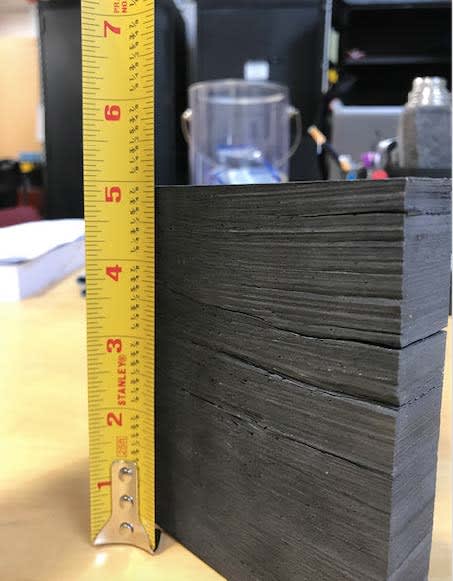There's a lot of interesting newly released info at the link from IRstuff
1. Preliminary design report for the carbon fibre sub completed by Boeing (2013)
- Suggests that it is feasible but acknowledges some of the risks inherent in CFRP and challenges due to differential thermal expansion, imperfections in the CFRP, and need for NDE. Suggests a need for further analysis.
2. Design report by the president of Spencer Composites (June 2015)
- Does not appear to give any consideration to the effects of imperfections on the design or any mention of a need for NDE.
- Claims that the design meets ASME BPVC Sec VIII Div 3 requirements.
- Suggests that either a titanium or composite dome could be used.
3. Stakeholder update by Stockton Rush (December 2015)
- The composite domes on the 1/3 scale model failed far below the predicted pressure.
- Claims that "Boeing with all their supercomputer capacity admitted they were unable to analyze such a structure" - Boeing's report didn't say that, but it did mention that "Compound curvatures such as spheres or ellipsoids generate additional discontinuities due to converging or diverging discrete material product forms which create gaps and/or overlaps between adjacent tows of slit tape composite material. These discontinuities can create local stress variations [which] reduce the capability of the structure. In general, composites are very efficient for in-plane loads, but complex loading near hardpoints or load transitions require cautious analysis for pristine and flawed structure. For this reason a hybrid concept was adopted..."
- OceanGate had apparently relied on the Spencer analysis for the composite domes. This analysis did not appear to include "cautious analysis for pristine and flawed structure" - it appeared to assume it was pristine with no gaps, delamination, or overlap.
- States "it is believed that the hemisphere buckled which was the reason our strain gauges did not give us warning of the failure. For the next test we will include acoustic monitoring which should give a better warning of this type of failure."
- Does not appear to recognize that they should not depend on analysis that significantly overestimates pressure at buckling failure (possibly because it did not consider imperfections).
- Also does not appear to recognize that buckling happens very quickly, so acoustic monitoring will likely result in an alarm sounding too late.
4. Quality Inspection Report by David Lochridge (2018)
- Very many significant problems, from those that should be easily avoidable (flammable flooring and internal materials that emit highly toxic gases upon ignition) to fundamental problems (visible significant delamination and porosity in the hull with no NDE to quantify the extent of the defects).
5. Risk Assessment for the ill-fated expedition (2023)
- Did not seem to consider any need for verification of the hull pressure integrity or inspection to find defects well before they led to failure. The only relevant item mentioned is "Monitor Acoustic Emissions system for extra ordinary acoustic hull events" as a "Control Measure" for the "Confined space" hazard during the dive.
- Note that there are items related to the "Pressure energy" hazard of the high-pressure air and low-pressure air systems, including inspecting for wear and damage, but they did not give the same consideration to the pressure vessel that would contain human occupants.
- Relies on the oft-criticized "severity x likelihood = risk" formula, with 5 levels with defined criteria for both of them
- Hazards do not seem to be well-defined
- Looks like somebody just assigned the severity and likelihood numbers based on intuition (and possibly avoiding any "High" risk ratings)
- Highest determined risk is 10 [Medium] - maximum possible on the scale is 25.
So far no design analysis performed after June 2015 has been released. I think the June 2023 failure was on a hull built by another manufacturer after there were some significant issues with the Spencer hull, but they reused the end rings, so they might have continued to rely on the same design analysis.

